 New Deathly Hallows: Part 2 Gringotts, Shell Cottage, Hogwarts boathouse set photos New Deathly Hallows: Part 2 Gringotts, Shell Cottage, Hogwarts boathouse set photos
Architectural Digest took a tour at some of the new sets from Harry Potter and the Deathly Hallows: Part 2, including the interior of Shell Cottage, the Gringotts lobby and vaults, and various new locations in Hogwarts, including the bridge corridor and boathouse. With commentary from production designer Stuart Craig, the images from the sets can be found in our galleries. Do note that there are spoilers about the final film within the commentary. 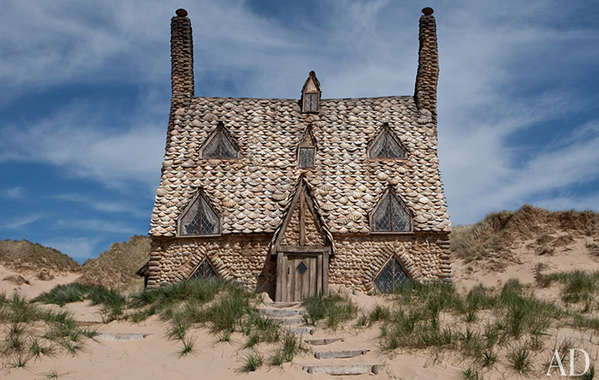
The seventh Harry Potter movie ends on the beach outside Bill and Fleur Weasley’s Shell Cottage, and the new film gives a look at the house itself. “I try to find a logic for whatever the set is and somehow I felt it was wrong for [Shell Cottage] to be too whimsical, too fanciful,” says production designer Stuart Craig.
“So this cottage has a logic. If you really wanted to build a house on the beach, what would you do? Well, you would use local materials. And the local materials would be either rocks or seashells. The walls are huge oyster shells and the roof is made of big scallop shells. You can see how scallop shells can lend themselves to overlapping and shedding water. I was kind of pleased with the logic underlying the structure that we had found there.”
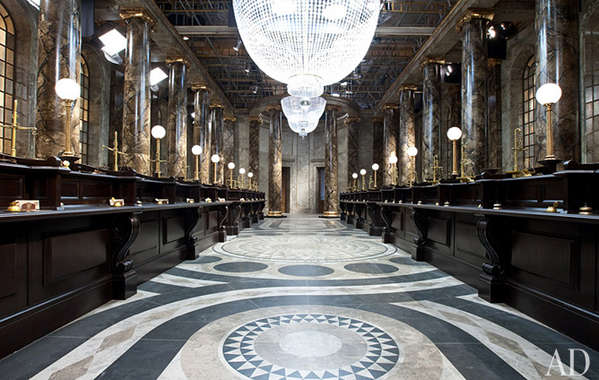
Craig and his team designed the bank to reflect wealth and grandeur. “Banks are traditionally symbols of stability,” he explains. “I know that recent history undid all this, but that is the intention in bank architecture—to convey this feeling of reassurance, of stabililty, of solidity. So our banking hall, like any other, is made of marble and big marble columns. And it has great strength.”
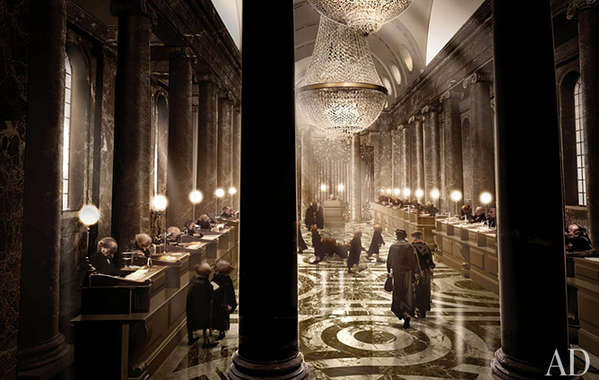
A concept drawing of Gringotts shows the designer’s vision for the set, complete with goblin bankers and wizard patrons. “The fact that the goblins are the bankers and tellers at the counter helps that feeling of grandeur and solidity and the big proportions,” Craig notes. “That was part of the fun of the set: We exaggerated the size of it, we exaggerated the weight of it, and we even exaggerated the shine of the marble.”
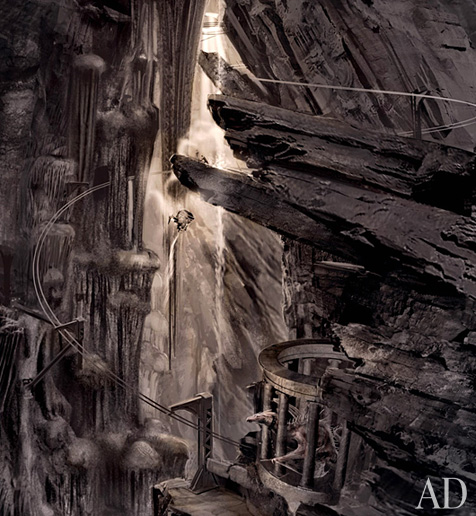
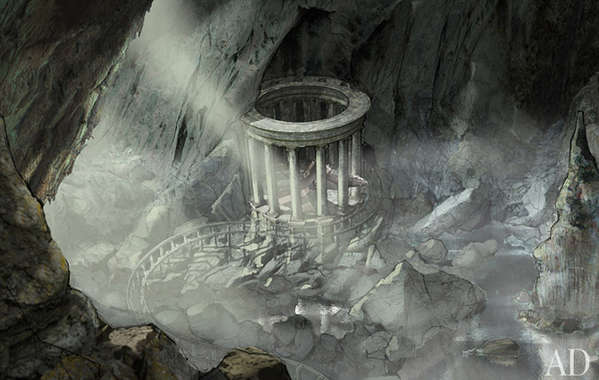
A massive dragon guards the entrance to the Lestrange vault. “He’s very anemic, having spent his entire life underground,” says Craig. “But he’s huge—64 feet long. This is the arena, and the little passageways between the columns are where the vaults are, so they have to get around the dragon in order to get to the vault.”
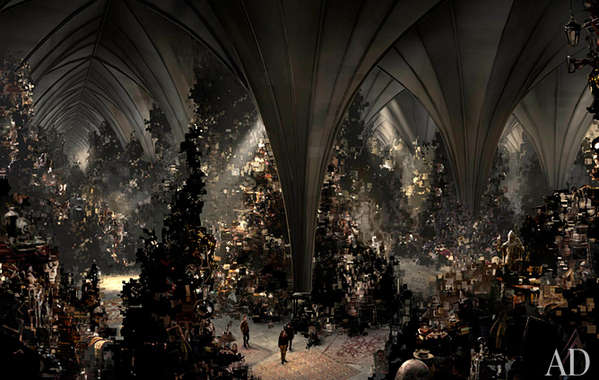
When designing the inside of the vault, Craig was faced with the challenge of creating an environment filled with objects that would multiply when touched. “We made literally thousands of pieces for it and vacuum metalized them to be shiny gold and silver,” he says. “And John Richardson, the special effects supervisor, made a floor that was capable of rising on different levels, so there was kind of a physical swelling of the treasure on it. Then that was enhanced with visual effects.”
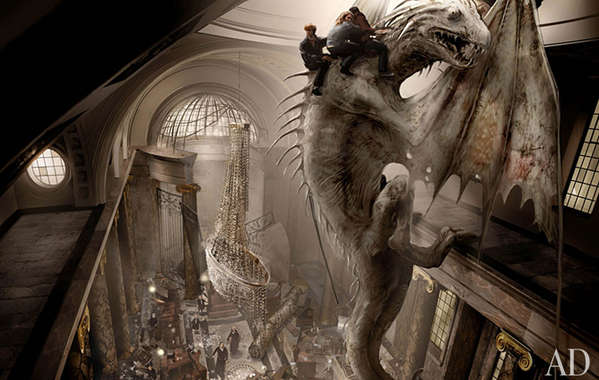
Craig notes that, like the sets, the creatures have evolved. “Harry Potter, in its ten-year period, spanned quite a bound in technology. At the beginning, we would have done most things physically—even some of the creatures were sculpted full size and operated as animatronic creatures. Toward the end of the process, they became digital constructions and brilliantly real.”

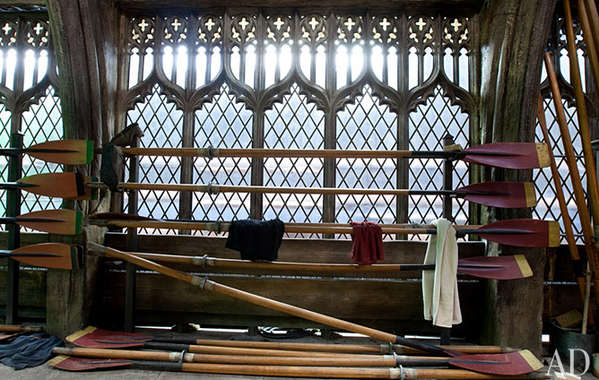
The boathouse at Hogwarts, described by author J. K. Rowling as an underground harbor, was designed as a light-filled building for the film. Featuring Gothic influences, the set is the site of a dramatic meeting between Voldemort and Severus Snape.
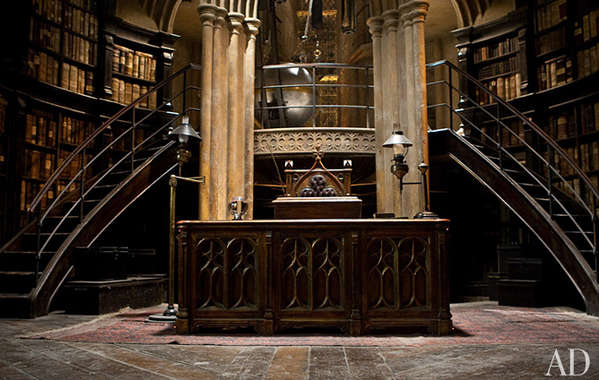
Quatrefoil decoration and clustered columns, both popular elements in Gothic architecture, are used in the design of Dumbledore’s office. “There were so many periods, styles, and changes that we could use. The whole movie was a great show in the history of Gothic architecture,” says Craig.
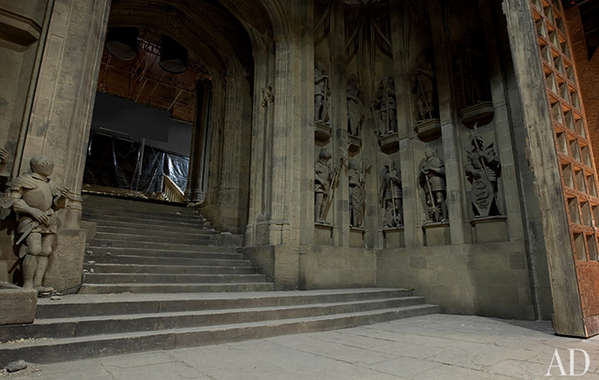
Part of the Battle of Hogwarts takes place in the school’s entrance hall, which was redesigned for the scene. “This is one example of how things just evolve and how Hogwarts changes from one movie to the next,” says Craig. “In the final battle, it’s required that the statues jump down and take part in the battle. So we needed to change the look of the entrance hall.”

One of the showdowns between Harry and Voldemort takes place on a catwalk beneath the battlement. “This was a way to make an interior/exterior space and to be able to move from one to another, which is always more interesting,” explains Craig. “This long central catwalk gave us the opportunity to stage the confrontation between Voldemort and Harry very theatrically.”
 |